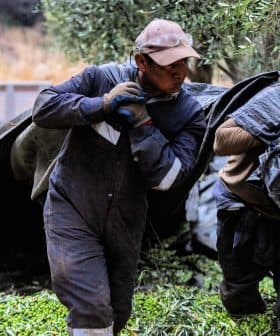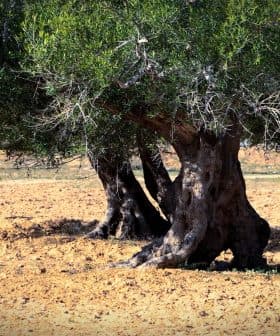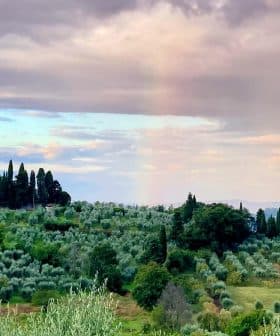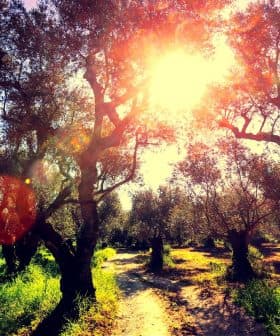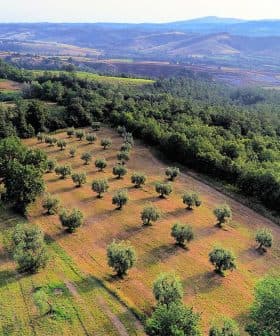Data Will Define Next 25 Years at California Olive Ranch, CEO Says
California Olive Ranch grew from a single olive farm to the largest producer in the United States. Now, the company plans to harness the power of data to keep growing.
 California Olive Ranch continues to expand acreage across the state.
California Olive Ranch continues to expand acreage across the state.  6.8K reads
6.8K readsCalifornia Olive Ranch (COR) has grown over the past 25 years to become the largest olive oil producer in the United States, expanding from a single grove in Oroville to 5,000 acres and 50 grower partners across the state. The company has invested heavily in data-driven farming practices to improve sustainability, adapt to climate change, and drive future growth by targeting promotional strategies to customers and expanding consumer awareness about the health benefits and versatility of olive oil.
Over the past quarter century, California Olive Ranch (COR) has grown from a single grove in Oroville, 100 kilometers north of Sacramento, into the largest olive oil producer in the United States.
The company was founded in 1998 as a hobby project by a Barcelona-based family office and pioneered high-density and later super-high-density olive tree cultivation in California.
We’ve gone deeper into data, understanding our carbon sequestration and the impact that our trees have on the environment. Then we set goals for how we can continue to improve that.
The idea to plant olive trees in hedgerows allowed COR to harvest mechanically, drastically cutting costs and allowing the fledgling company to start on its path to scale.
“We started with 500 acres (200 hectares) in Oroville,” chief executive Michael Fox told Olive Oil Times. “Now, we have 5,000 acres (2,000 hectares) and 50 grower partners up and down the state.”
See Also:California Olive Oil Producers Weigh the Impact of Tropical Storm HilaryWhile the first 25 years for COR was defined by its push to achieve scale, Fox believes data will determine the company’s trajectory over the next quarter century.
“Our approach to farming has evolved,” Fox said. “When I came on board [in 2019], I wanted to invest a lot in data around the nutrition of our trees and irrigation uptake; all the elements of getting bigger fruit with more oil.”
The company’s 2,000 hectares of olive groves have been divided into blocks, each located in a different region and microclimate.
Using a combination of sensors, the United States Department of Agriculture satellites and 30 people out in the groves, the company can see how trees take nutrition and their water needs monthly, allowing them to adjust throughout the year.
“We are looking at the trees block by block and then making adjustments based on what we’re seeing,” Fox said. “Now, we’re tracking everything a lot better with data. We will learn from these next couple of harvests and make adjustments.”
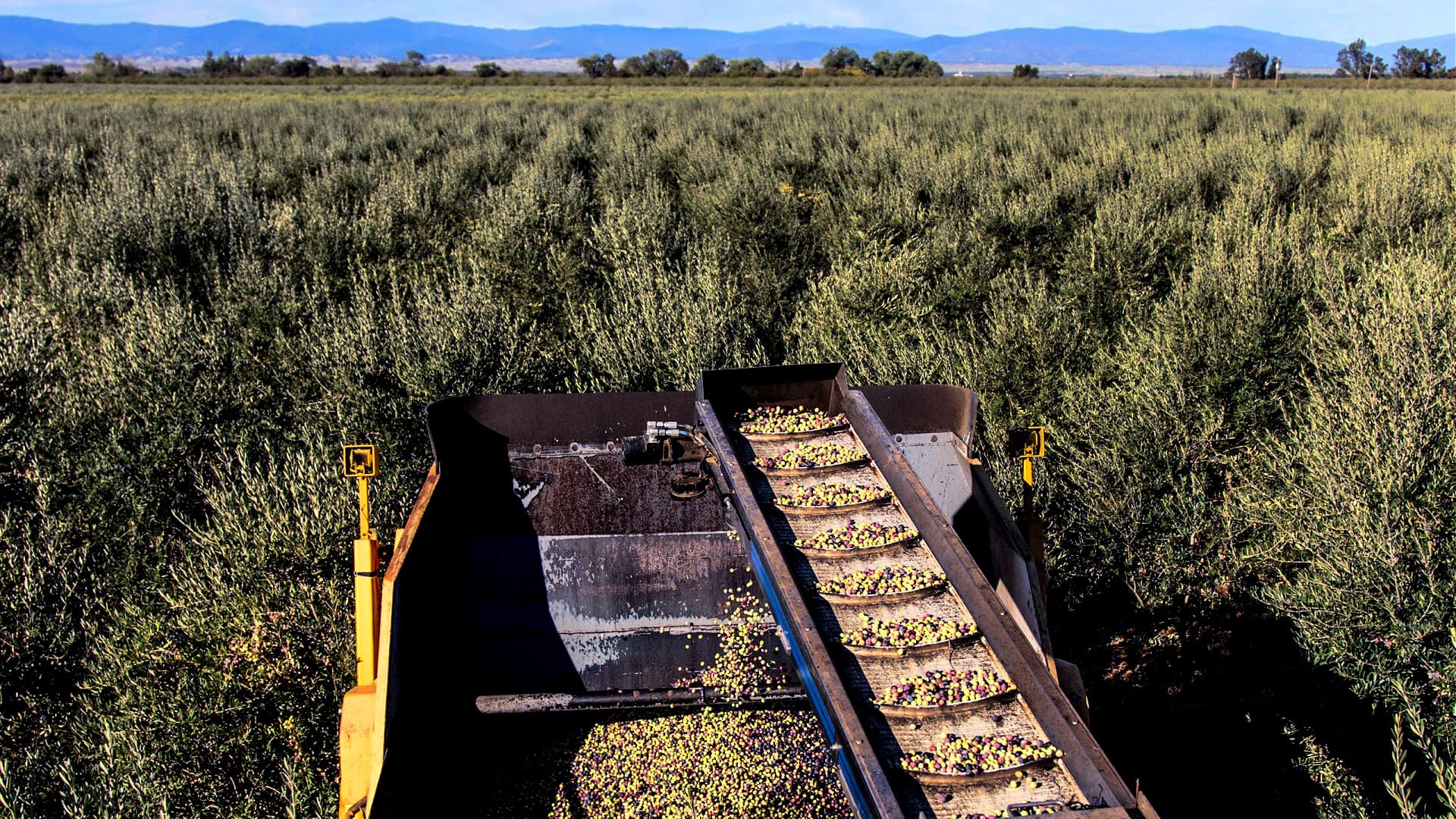
With 5,000 acres of its own groves and 50 grower partners, California Olive Ranch is the largest olive oil producer in the U.S.
The heavy investment in data is helping the company to achieve its self-imposed sustainability goals. “Over the last four years, we’ve adopted a lot of regenerative agriculture practices,” Fox said.
These include grazing livestock in the olive groves, using minimal tilling and composting the byproducts of the olive oil production process.
Again, Fox said data drives many decisions surrounding the company’s regenerative agricultural practices, which he believes is necessary to adapt to one of the main challenges facing the company and industry in California: climate change.
“We’ve gone deeper into data, understanding our carbon sequestration and the impact that our trees have on the environment,” he said. “Then we set goals for how we can continue to improve that.”
Improving water efficiency was among these goals. To that end, Fox said the company invested in sophisticated irrigation systems to provide precise amounts of water to the trees at exactly the right moments during olive development.
Fox is also focused on soil regeneration, recognizing that promoting healthy soil, which retains water more efficiently than unhealthy soil, is increasingly necessary in a drought-prone state.
Along with adopting these practices in their groves, Fox emphasized that the company also uses what it has learned to advise its grower partners to help them become more sustainable and efficient.
“Our partners love us because we were the first to do this and, candidly, they like to say we made the most mistakes,” Fox said. “We made mistakes early on that they could learn from.”
Before joining COR in 2019, Fox worked as an executive at PepsiCo and Safeway, a supermarket chain.
Based on his experience in the grocery and snack food industries, he is using data to target promotional strategies to customers at specific times and drive the future of the company’s retail strategy.
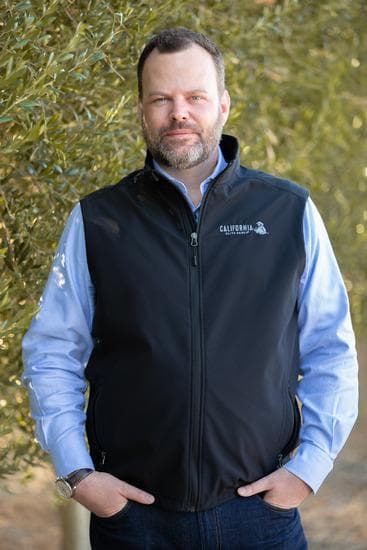
Michael Fox
“We are a consumer packaged goods company, so we have to behave like one,” Fox said. “Data helps us make sure those investments are paying off for us and our customers.”
According to Fox, using data to drive promotion adds to what he said was already a robust branding strategy before he joined the company.
Fox said COR grew more rapidly over the past ten years, helped by its distinctive green bottle and winning quality awards at local and international competitions.
“Today, we are the number three extra virgin olive oil in the U.S. grocery channel, and we’re the number one 100-percent California extra virgin olive oil,” he said.
According to Fox, the company has overcome challenges of inflation, production cost increases and three relatively poor harvests over the past five years, increasing the amount of olive oil sold and total revenue from sales.
Fox attributed the recent spate of poor harvests to adverse weather conditions, primarily high temperatures in January, causing the olive trees to bloom prematurely, followed by frost, which damages the developing buds and prevents the trees from producing any fruit.
“Fortunately, we built a business model that can sustain that,” he said. “By having our Global Blend in California, we can sustain challenges like that and still grow the business.”
Since its 2018 debut, the Global Blend has been controversial. Other producers in the state accused COR of undercutting their products by selling imported olive oils, which are often cheaper to produce than California olive oil while profiting off of the California name.
Fox denied that COR was attempting to undercut other olive oil producers. To maintain shelf space in major national retailers – a costly and highly competitive process – COR must distribute a consistent number of bottles yearly.
The company originally adopted this strategy after a poor harvest in 2018 resulted in them importing oil from Europe and South America to meet demand. Since then, it has become part of their growth strategy, with about 70 percent of COR sales coming from the Global Blend.
“Still, our goal is to expand,” Fox said. “We are the most widely distributed, but we only have 3 percent of American households buying California Olive Ranch.”

COR rose to prominence for its role promoting super-high-density olive groves in California. Now, the company is trying to do the same with data.
According to COR’s market research, the leading olive oil brand in the U.S. is purchased by 14 percent of households, while 58 percent are buying any olive oil.
“There’s a huge opportunity to increase household penetration through awareness,” Fox said. Along with climate, growing the consumer base for olive oil in the U.S. is the other main challenge facing the company and sector.
COR is working to achieve this by raising awareness about the health benefits of olive oil, promoting the versatility of cooking with olive oil, and working to sell olive oil in different sizes and packaging formats.
“There’s a bifurcation in the needs. The people who are buying olive oils are looking for health, taste and quality, while the people buying other cooking oils are looking for versatility,” Fox said. “We need to educate consumers that extra virgin olive oil can be versatile.”
“For bang for the buck, this is probably the best product you can buy in the store from a health component and a sustainability component,” he added. “The more people understand that olive oil should be in your pantry is the way to get from 58 percent household penetration to 80 percent household penetration.”
Looking ahead to the coming harvest, which will begin in the first weeks of October, Fox said he feels optimistic. “Things are looking good,” he said. “Especially because we’re coming off a couple of really bad years.”
The company is preparing its harvest strategy to ensure the olives have the highest possible oil accumulation before they start picking and milling.
“This year, we’re dedicating our harvest to Bob Singletary, who was our founding master miller and was with our business for many years,” Fox said. “Unfortunately, he passed away this year.”
“We have a very strong team that he trained,” he added. “He was a special part of our life, so we’re dedicating the harvest and our Olio Nuovo to him.”
Share this article


